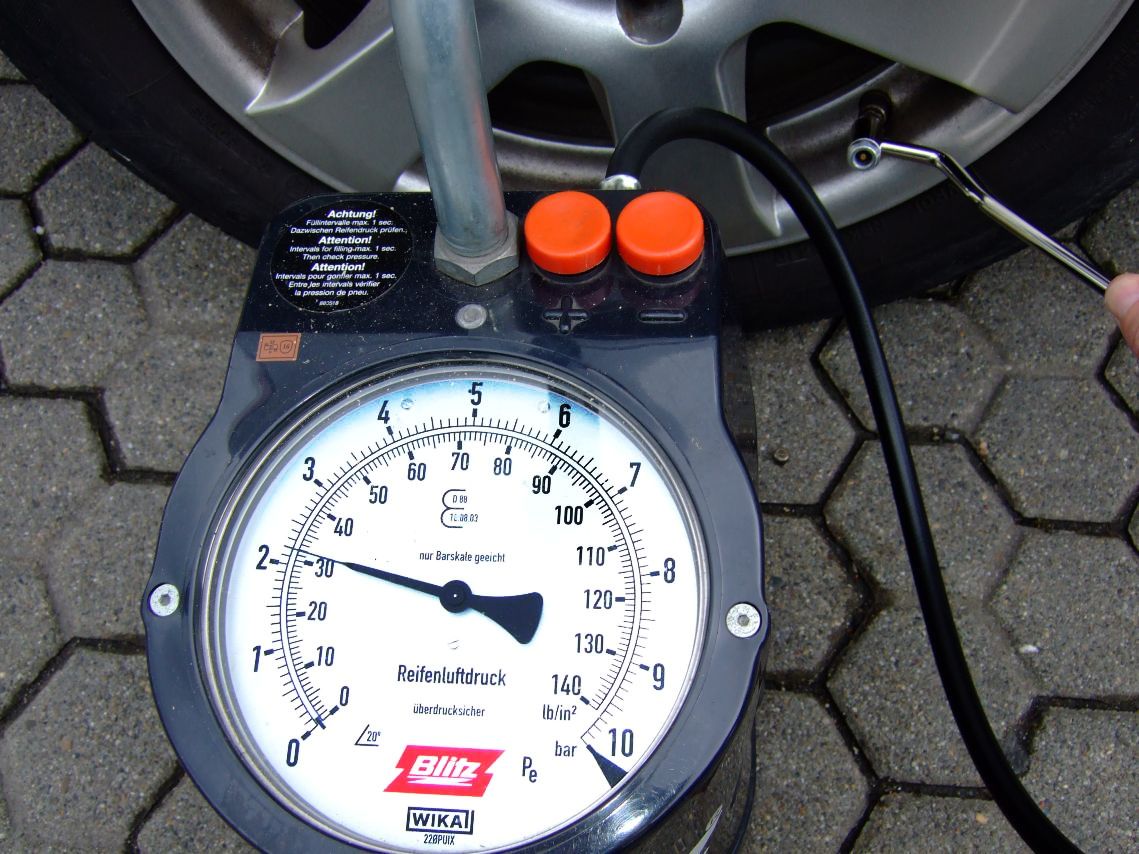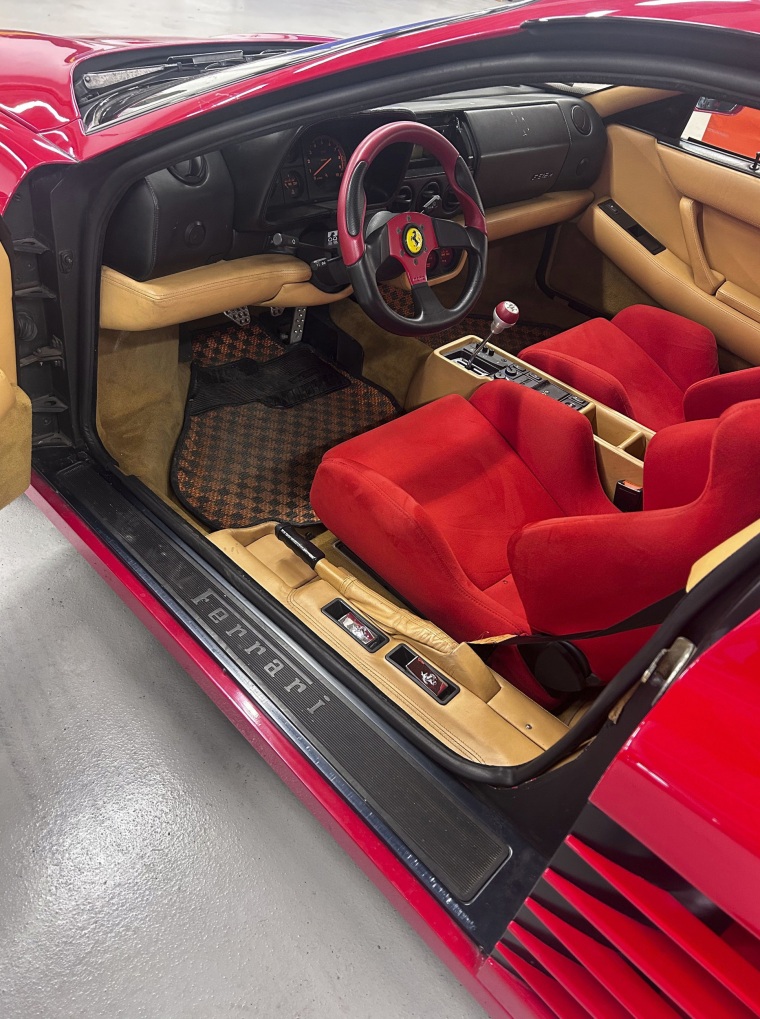
Choosing a minivan is often a significant decision, marking a new chapter for growing families, the expansion of cargo needs, or simply a pursuit of unparalleled passenger comfort. Beyond the allure of convenient sliding doors and integrated entertainment systems, a fundamental question looms for any prospective owner: which minivan can truly deliver consistent reliability, spending more time facilitating family adventures and less time languishing in a repair shop? The journey to find such a vehicle can be fraught with hidden pitfalls, especially when complex and costly components like the transmission are involved.
Reliability, in this context, is far more than an intuitive feeling from a brief test drive; it represents a quantifiable measure of a vehicle’s sustained performance without failure over its operational life. Modern minivans, with their intricate technological integrations and robust demands placed upon their powertrains, present numerous points where issues can arise. Understanding these potential vulnerabilities, particularly concerning the engine and transmission—the very heart of any vehicle—is paramount for consumers aiming to avoid the significant financial burden that comes with frequent or major mechanical failures.
This in-depth guide is designed to empower consumers with actionable information, drawing from real-world data, common reported issues, and expert evaluations. While some minivans consistently earn high marks for dependability, others unfortunately develop reputations as ‘money pits’ due to recurring and expensive problems, often centered around their transmissions. We will delve into specific models that, based on various reliability studies and owner feedback, have shown a propensity for significant mechanical issues, helping you navigate the complexities of vehicle ownership and identify the minivans that are better left on the lot.
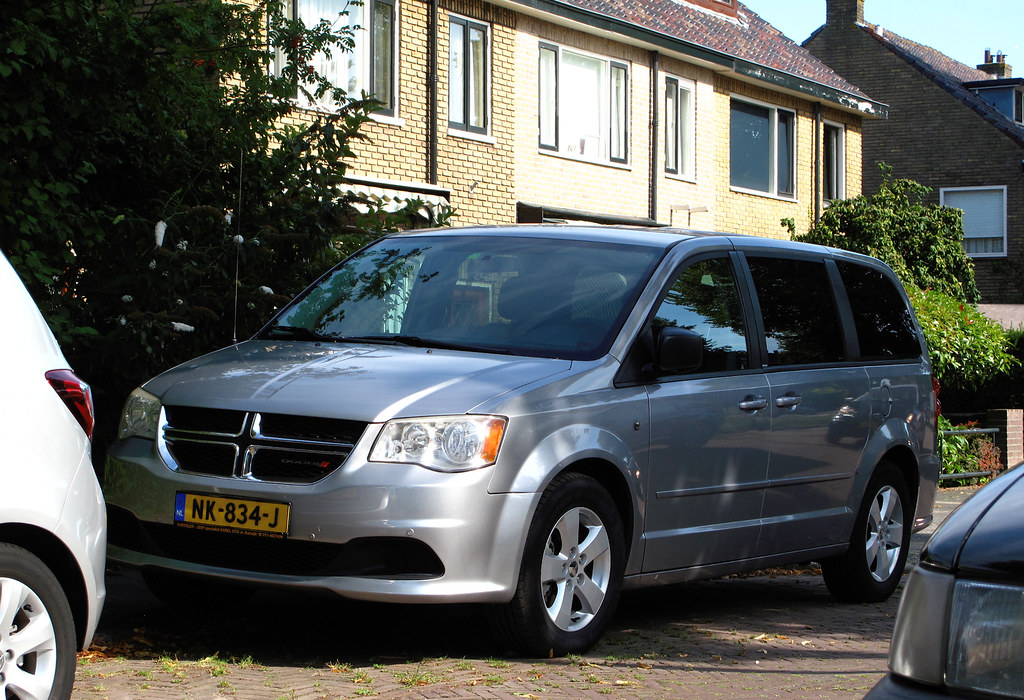
1. **Dodge Grand Caravan**The Dodge Grand Caravan has historically appealed to families seeking an affordable entry into the minivan segment, often lauded for its spacious interior and versatile seating options. However, beneath its budget-friendly exterior and practical features lies a well-documented history of mechanical issues that have unfortunately cemented its reputation as a vehicle prone to frequent breakdowns and costly repairs, making it a significant financial drain for many owners over time.
One of the most persistently reported and financially burdensome problems associated with the Grand Caravan centers on its transmission. Numerous owners have described instances where the transmission begins to slip, hesitate, or completely fail, often before reaching the 100,000-mile mark. Such issues necessitate expensive overhauls or complete replacements, turning an initially economical purchase into a substantial, unforeseen expense. This consistent pattern of transmission fragility is a primary reason why it earns a spot on the list of minivans to approach with extreme caution.
Beyond transmission woes, the Grand Caravan’s powertrain has also exhibited other significant vulnerabilities. The engine, particularly in earlier models, is known to develop oil leaks that, if not promptly addressed, can lead to more severe damage. Furthermore, timing chain issues have been a recurring concern, contributing to higher repair costs and increased downtime. These engine-related problems, combined with transmission failures, create a compounding effect of financial strain that can quickly diminish the perceived value of the vehicle.
The electrical system in the Dodge Grand Caravan also frequently emerges as a weak point, adding to the vehicle’s unreliability. Owners have reported a range of frustrating electrical glitches, from malfunctioning power windows and door locks to more critical issues impacting the ignition system and various dashboard components. These seemingly minor electrical problems can often be difficult and expensive to diagnose and repair, contributing to the vehicle’s overall reputation as a money pit.
Furthermore, the suspension system of the Grand Caravan is another area where many owners experience problems, leading to a less comfortable ride and potentially unsafe driving conditions. Reports of excessive noise, vibrations, and premature wear of suspension components are common. When considering the cumulative effect of these pervasive transmission, engine, electrical, and suspension issues, it becomes clear why the Dodge Grand Caravan, despite its initial appeal, represents a risky investment for families seeking long-term reliability and predictable ownership costs.
Car Model Information: 2022 Toyota Tacoma SR5
Caption: 2011 Dodge Grand Caravan Mainstreet
Name: Dodge Grand Caravan
Manufacturer: Chrysler Corporation,Daimler AG,Chrysler LLC,Chrysler Group LLC,FCA US LLC
Class: Minivan
Layout: FF layout,F4 layout
Production: November 2, 1983 –August 21, 2020
ModelYears: 1984–2020
Related: Plymouth Voyager,Chrysler Town & Country (minivan),Dodge Mini Ram,Chrysler Voyager,Volkswagen Routan
Assembly: Windsor, Ontario,Fenton, Missouri,Fenton, Missouri,Fuzhou
Successor: Dodge Journey,Chrysler Voyager
Categories: All-wheel-drive vehicles, All articles with unsourced statements, Articles with short description, Articles with unsourced statements from December 2017, Articles with unsourced statements from May 2009
Summary: The Dodge Caravan is a series of minivans manufactured by Chrysler from the 1984 through 2020 model years. The Dodge version of the Chrysler minivans, was marketed as both a passenger van and a cargo van (the only version of the model line offered in the latter configuration). For 1987, the model line was joined by the long-wheelbase Dodge Grand Caravan. Produced in five generations across 36 model years, the Dodge Caravan is the second longest-lived Dodge nameplate (exceeded only by the Dodge Charger). Initially marketed as the Dodge counterpart of the Plymouth Voyager, the Caravan was later slotted between the Voyager and the Chrysler Town & Country. Following the demise of Plymouth, the model line became the lowest-price Chrysler minivan, ultimately slotted below the Chrysler Pacifica.
Sold primarily in the United States and Canada, the Dodge Caravan was also marketed in Europe and other international markets under the Chrysler brand (as the Chrysler Voyager or Chrysler Caravan). From 2008 onward, Dodge marketed the model line only as the Grand Caravan; Ram Trucks sold a cargo-only version of the model line as the Ram C/V Tradesman. The model line was also rebranded as the Volkswagen Routan from 2009 through 2014.
After the 2020 model year, the Dodge Grand Caravan was discontinued, ending production on August 21, 2020. For 2021 production, the Grand Caravan nameplate was moved to Chrysler, which used it for a Canadian-market version of the Chrysler Pacifica (in the United States, the exact vehicle was marketed as the Chrysler Voyager).
For its entire production run, the Dodge Caravan/Grand Caravan was manufactured by Chrysler Canada (now Stellantis Canada) at its Windsor Assembly facility (Windsor, Ontario). From 1987 until 2007, the model line was also manufactured by Chrysler at its Saint Louis Assembly facility (Fenton, Missouri). Since their introduction in late 1983, over 14.6 million Chrysler minivans have been sold worldwide (including export versions and versions sold through rebranding).
Get more information about: Dodge Caravan
Buying a high-performing used car >>>
Brand: Dodge Model: Grand Caravan
Price: $25,987 Mileage: 57,020 mi.
Read more about: Bypass These 6 Compacts: They Become Headaches for Any Mechanic After You Hit Triple Digits
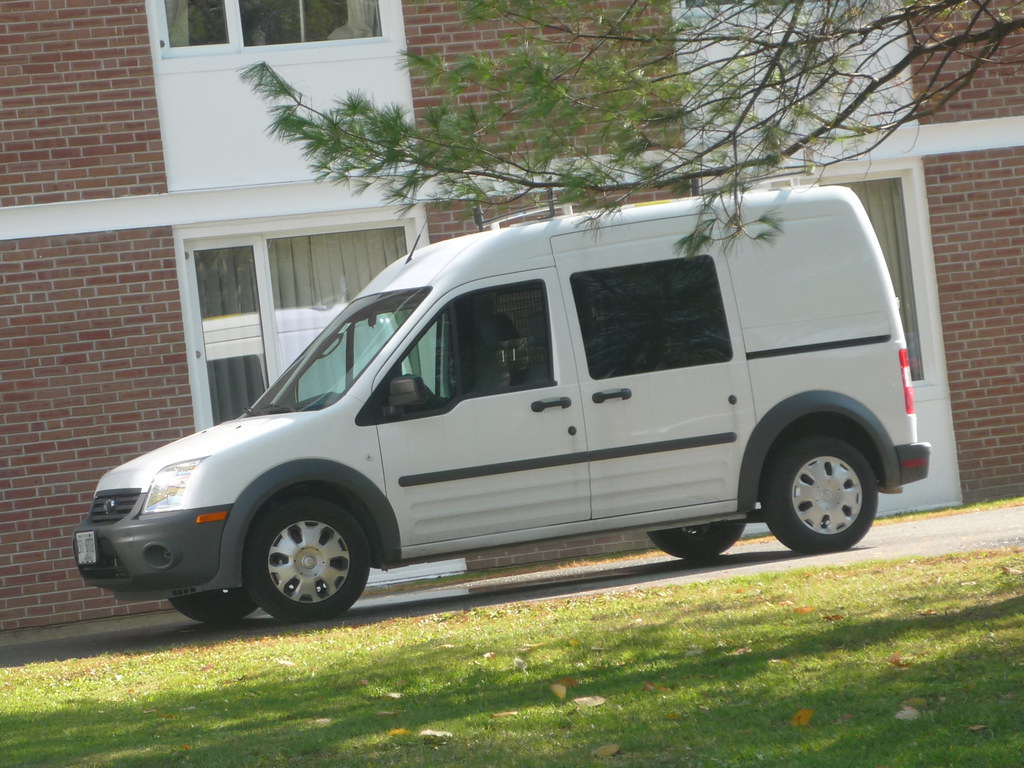
2. **Ford Transit Connect**The Ford Transit Connect, recognized for its compact dimensions and versatile utility, often attracts families and small businesses alike who value its maneuverability and cargo-carrying capabilities in urban environments. While its design offers a practical solution for specific needs, its long-term reliability track record reveals a pattern of frequent mechanical issues, particularly concerning its transmission, that can lead to considerable frustration and unexpected financial outlays for owners.
At the forefront of the Ford Transit Connect’s reported problems are its transmission issues. Many owners have encountered premature wear or outright failure of the transmission, sometimes after only a few years of ownership. This can manifest as rough shifting, slipping gears, or a complete loss of power, requiring extensive and costly repairs or replacement. Such significant powertrain failures are a critical factor contributing to this model being labeled a potential money pit, undermining its initial appeal as a practical and economical choice.
These transmission problems are not isolated incidents but represent a recurring theme in owner complaints and reliability assessments. The complexity and expense involved in addressing these issues mean that what might seem like a budget-friendly or efficient family vehicle can quickly rack up significant repair bills, eroding any savings gained from its initial purchase price or fuel efficiency. The potential for unexpected transmission work necessitates careful consideration for anyone contemplating a Transit Connect, especially as a primary family vehicle.
Beyond the primary transmission concerns, while the context does not explicitly detail other specific widespread issues for the Transit Connect, its inclusion in a list of vehicles that “constantly break down” strongly implies a broader susceptibility to frequent mechanical problems. These can encompass a range of issues common to vehicles with subpar long-term performance, often including engine components, electrical systems, or even early wear on suspension and braking parts. Any of these can collectively contribute to an ownership experience burdened by unforeseen expenses and inconvenience.
For families or individuals prioritizing uninterrupted service and predictable maintenance costs, the Ford Transit Connect’s reputation for frequent mechanical and, specifically, transmission issues warrants a cautious approach. Despite its practical design and agility, the risk of substantial repair expenses, particularly related to its critical drivetrain components, makes it a model that demands thorough research and an understanding of its potential to become a financial burden.
Car Model Information: 2024 Volkswagen Tiguan 2.0T SE R-Line Black
Name: Ford Transit Connect
Manufacturer: Ford of Europe
Aka: Ford Tourneo Connect,Volkswagen Caddy,Azure Transit Connect Electric
Production: 2002–present
Class: unbulleted list
BodyStyle: unbulleted list
Layout: Front-engine, front-wheel-drive
Predecessor: unbulleted list
Sp: us
ModelYears: 2010–2023 (North America)
Categories: 2000s cars, 2010s cars, All Wikipedia articles in need of updating, All articles with unsourced statements, Articles with short description
Summary: The Ford Transit Connect is a compact panel van manufactured and marketed by Ford since 2002. Developed by Ford of Europe, the model line replaced sedan-based vans (Ford Escort and Ford Courier vans) with a dedicated commercial vehicle platform. The model line is the second-smallest vehicle of the Ford Transit range, slotted between the Ford Transit Courier LAV and the Ford Transit Custom LCV/MPV. In line with other Ford Transit variants, passenger-oriented models (in Europe) are marketed as the Ford Tourneo Connect with side windows and rear seats.
The first and second-generation Transit Connect has been imported to North America from the 2010 model year. To circumvent the 25% “chicken tax” on imported light trucks, all examples have been imported as passenger vans, with cargo vans converted to the intended configuration after their importation. In the region, the Transit Connect does not have a direct predecessor; the closest vehicle to its size was the standard-length Ford Aerostar cargo van, which ceased production in 1997.
The first-generation Transit Connect was assembled by Ford Otosan (Kocaeli, Turkey) along with Ford Romania (Craiova, Romania). For the second generation, Ford of Europe shifted production to its Ford Valencia Body and Assembly facility (Almussafes, Valencia, Spain). For 2022, a third generation of the Tourneo Connect was released; based on the Volkswagen Caddy, the model line is assembled by Volkswagen in Poland.
Get more information about: Ford Transit Connect
Buying a high-performing used car >>>
Brand: Ford Model: Transit Connect
Price: $27,995 Mileage: 9,546 mi.
Read more about: Unlocking the Vault: A Deep Dive into Ralph Lauren’s Multi-Million Dollar Ferrari Collection and Beyond
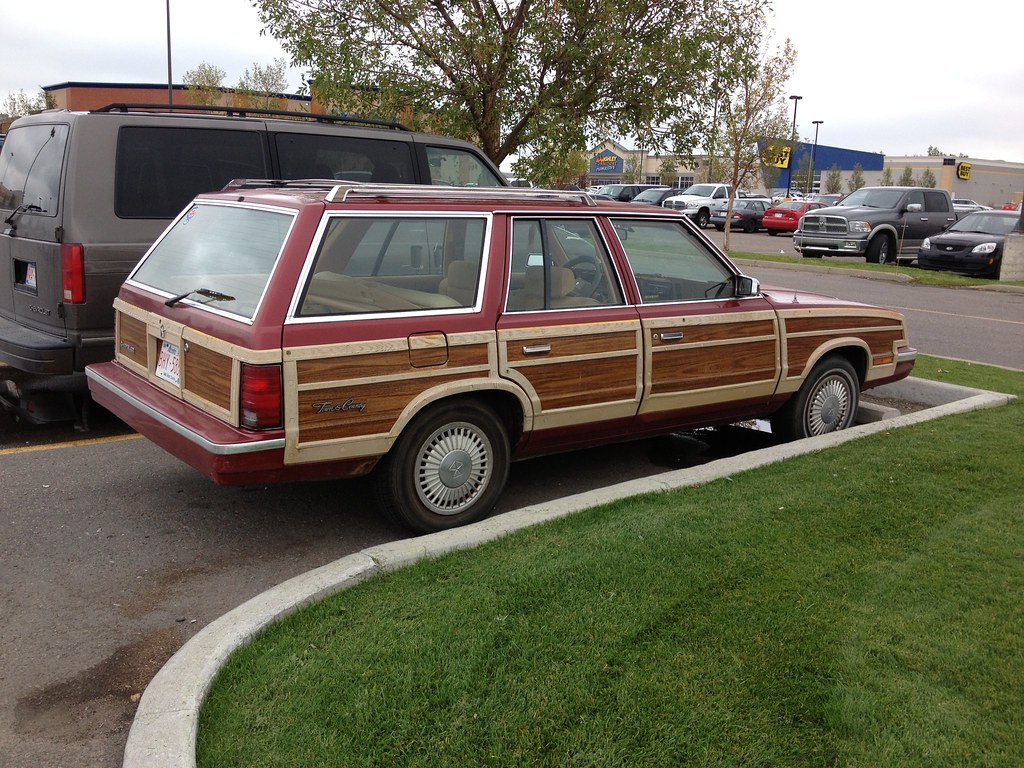
3. **Chrysler Town & Country**The Chrysler Town & Country, a long-standing fixture in the minivan market, was a popular choice for many families due to its spacious interior, comfortable ride, and numerous family-friendly features. However, despite its market presence and practical appeal, this model has, over the years, accumulated a reputation for consistent breakdowns and significant mechanical problems that have often led to substantial financial outlays for its owners, positioning it as a vehicle that can quickly become a money pit.
While the context doesn’t provide granular detail on every single flaw for the Town & Country, its inclusion in the list of minivans that “constantly break down” is a clear indicator of systemic reliability issues. Drawing from common minivan problems outlined in broader reliability assessments, engine and transmission issues frequently emerge as primary culprits behind such widespread dependability concerns. These critical powertrain components are often the most expensive to repair or replace, directly contributing to the vehicle’s ‘money pit’ status.
Transmission performance, in particular, has been a recurring theme in the broader minivan segment for models with lower reliability scores, and it is highly probable that the Town & Country has faced its share of such challenges. Problems such as erratic shifting, slippage, or complete transmission failure are costly endeavors, significantly impacting the vehicle’s long-term ownership value. When a vehicle is known for constant breakdowns, it often points directly to weaknesses in these core mechanical systems.
Furthermore, beyond the engine and transmission, minivans prone to frequent issues often grapple with electrical system glitches. These can range from minor annoyances with power accessories to more critical failures affecting vehicle operation or safety features. Such electrical problems, coupled with potential weaknesses in suspension and braking systems due to general wear and tear in family vehicles, contribute to a comprehensive profile of a vehicle that demands more maintenance and repair attention than many owners anticipate or can easily afford.
For families considering a used Chrysler Town & Country, the pervasive reports of frequent mechanical issues should serve as a strong cautionary tale. The lure of its features and space can quickly be overshadowed by the reality of recurring breakdowns and the high cost of repairs for critical components like the transmission and engine. Thorough pre-purchase inspections and a detailed review of service records are absolutely essential to avoid inheriting a vehicle that could become a significant financial burden.
Car Model Information: 2022 Toyota Tacoma SR5
Name: Chrysler Town & Country
Manufacturer: Chrysler Corporation
Production: 1989–2016
ModelYears: 1990–2016
Class: Minivan
Predecessor: Chrysler Town & Country (1941–1988)
Successor: Chrysler Pacifica (minivan)
Categories: 1980s cars, 1990s cars, 2000s cars, 2010s cars, All-wheel-drive vehicles
Summary: The Chrysler Town & Country is a minivan manufactured and marketed by Chrysler starting from the 1990 until the 2016 model year. It was the third Chrysler minivan model introduced in North America. The Town & Country adopted its nameplate from the flagship Chrysler station wagon line, adopting its exterior woodgrain trim as a design feature for several generations.
Marketed as the flagship of the Chrysler minivan line, five generations of the Town & Country were slotted above the extended-wheelbase Dodge Grand Caravan and Plymouth Grand Voyager. For 2017, Chrysler retired the nameplate, with sixth-generation Chrysler-division minivans becoming the Chrysler Pacifica. After the 2016 model year, Chrysler marked the sale of its 12 millionth minivan (under all three nameplates). Produced almost continuously for 75 years (except during World War II and 1989), the Town & Country nameplate is the longest-produced Chrysler; its longevity is second only to the Chevrolet Suburban in automotive history.
Chrysler assembled the first three generations of the model line in its Saint Louis Assembly facility (Fenton, Missouri). The fourth and fifth-generation Town & Country were produced by Chrysler Canada by Windsor Assembly (Windsor, Ontario).
Get more information about: Chrysler Town & Country (minivan)
Buying a high-performing used car >>>
Brand: Chrysler Model: Town & Country
Price: $25,987 Mileage: 57,020 mi.
Read more about: Accident-Proof Rides: Unveiling 14 Cars Secretly Engineered to Transform Even the Most Terrible Drivers into Confident Road Warriors
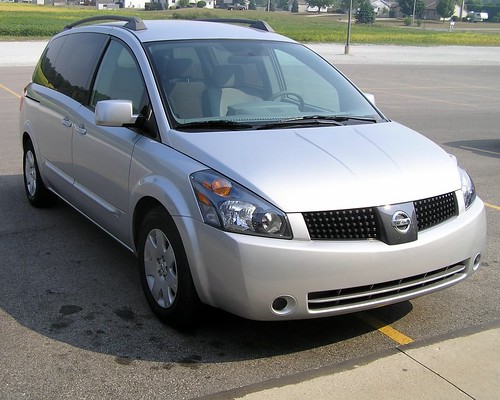
4. **Nissan Quest**The Nissan Quest, with its distinctive styling and comfortable interior, aimed to offer a compelling option in the competitive minivan segment. While it provided ample space and a generally pleasant cabin environment, its journey in the market has been marred by persistent reliability concerns that have unfortunately led to a reputation for frequent breakdowns and substantial repair costs. For many owners, the Quest has proven to be a financial liability, quickly transforming from a family hauler into a significant money pit.
Its inclusion in the list of minivans that “constantly break down” is a stark warning for potential buyers. Although specific, detailed causes for its unreliability aren’t individually itemized in the provided context, the general patterns observed in less reliable minivans suggest that powertrain components—namely the engine and transmission—are often at the heart of such widespread issues. Given the topic’s focus, it is reasonable to infer that transmission-related problems are a significant contributor to the Quest’s poor dependability score.
Minivans, by nature, are subjected to heavy loads and frequent use, placing considerable stress on their transmissions. When these critical components are not engineered for robust longevity, issues such as premature wear, erratic shifting, or complete failure can become prevalent. Such transmission problems are invariably expensive to rectify, often requiring repairs that can easily run into thousands of dollars, thus severely impacting the vehicle’s long-term economic viability and owner satisfaction.
Beyond potential transmission troubles, models with a reputation for constant breakdowns often face a myriad of other mechanical and electrical challenges. These can include issues with critical engine components, leading to costly diagnoses and repairs, or problems within the sophisticated electrical systems that control everything from infotainment to safety features. Each of these potential failure points contributes to an ownership experience characterized by unexpected visits to the mechanic and escalating repair bills.
For families weighing the purchase of a Nissan Quest, especially a used model, it is crucial to recognize its established reputation for unreliability. The initial purchase price might seem attractive, but the likelihood of encountering frequent and expensive mechanical failures, particularly those affecting the transmission and engine, makes it a high-risk proposition. Prudent consumers should prioritize other models with stronger, proven reliability records to ensure peace of mind and avoid the financial strain associated with a true money pit.
Read more about: Before You Buy: The 14 Essential Checks Your Mechanic Insists You Make on Any Used Convertible
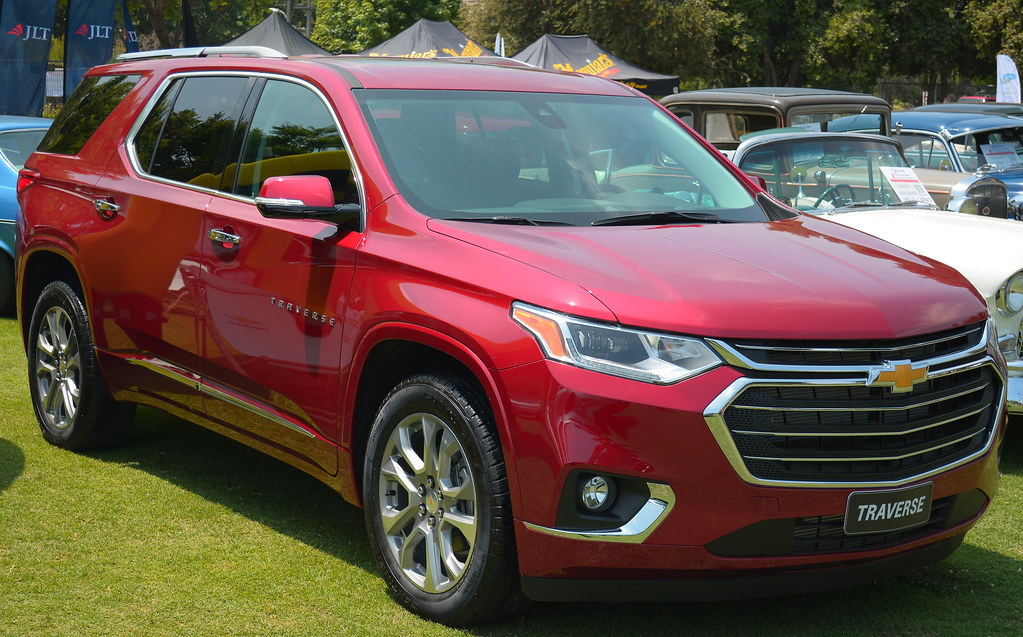
5. **Chevrolet Traverse**The Chevrolet Traverse, while often considered an SUV, has a spacious, family-friendly interior that positions it as a practical alternative to traditional minivans for many consumers. However, despite its appealing dimensions and cargo capacity, the Traverse has earned a place on lists of vehicles known for frequent breakdowns and significant mechanical problems. For families prioritizing uninterrupted service and predictable ownership costs, this model presents considerable risks that can quickly transform an initial purchase into a financial burden.
At the core of the Traverse’s reliability concerns are its powertrain components. While specific detailed issues are not always individually itemized across all sources, its inclusion in lists of vehicles that ‘constantly break down’ strongly indicates underlying vulnerabilities in critical areas like the engine and transmission. These are precisely the components that, when faulty, lead to the most expensive and time-consuming repairs, directly contributing to a vehicle’s ‘money pit’ status.
Transmission issues, a central theme for minivans known for poor reliability, are frequently reported in vehicles with subpar long-term performance, and the Traverse is not exempt from these patterns. Owners may encounter problems such as rough shifting, hesitation, or even premature transmission failure. Such significant malfunctions demand extensive and often prohibitive repair work, undermining the vehicle’s perceived value and the financial stability of its owners.
Beyond the transmission, the Chevrolet Traverse can also exhibit other persistent mechanical and electrical challenges that erode long-term dependability. Engine problems, including issues with timing chains or various sensors, can lead to costly diagnostics and repairs. Furthermore, electrical system glitches, ranging from minor accessory malfunctions to more serious operational failures, contribute to an ownership experience burdened by unexpected mechanic visits and escalating bills.
For families considering a Chevrolet Traverse, particularly a used model, it is crucial to approach with caution. The potential for frequent and expensive mechanical issues, particularly concerning the transmission and engine, makes it a higher-risk investment. Prudent buyers should prioritize models with a more robust, proven reliability record to ensure peace of mind and avoid the financial strain associated with a vehicle that frequently requires significant repairs.
Car Model Information: 2021 Chevrolet Traverse Premier
Name: Chevrolet Traverse
Caption: Second generation facelift model
Manufacturer: General Motors
Production: 2008–present
ModelYears: 2009–present
Class: Full-size crossover SUV
Layout: ubl
Predecessor: Chevrolet TrailBlazer
Categories: 2010s cars, 2020s cars, All-wheel-drive vehicles, All Wikipedia articles written in American English, All articles with dead external links
Summary: The Chevrolet Traverse is a full-size crossover SUV with three-row seating built by General Motors produced since the 2009 model year. It is built on the same platform as the GMC Acadia and Buick Enclave, known as the Lambda platform for the first generation, and the C1XX for the second generation. It also shares the C1XX platform with the Cadillac XT6. It is the successor to the TrailBlazer body-on-frame SUV and the Uplander minivan.
The second-generation model debuted in showrooms in the middle of 2017. Starting with the 2019 model year, the Traverse was slotted above the new mid-size Chevrolet Blazer as part of Chevrolet’s plans to expand its SUV lineup.
The Traverse name was originally used for a concept car at the 2003 North American International Auto Show in Detroit, but that concept gave way when the Equinox launched for the 2005 model year.
Get more information about: Chevrolet Traverse
Buying a high-performing used car >>>
Brand: Chevrolet Model: Traverse
Price: $29,995 Mileage: 84,738 mi.
Read more about: Understanding Water Damage: The 10 Vehicles That Survive Floods and the Ones That Fail in Light Rain, Causing Costly Electrical Gremlins

6. **Honda Odyssey (Early to Mid-2000s Model Years)**The Honda Odyssey generally enjoys a strong reputation for reliability, consistently ranking as a top contender in the minivan segment due to its dependable engine and refined transmission. However, even highly regarded models can have specific Achilles’ heels, and for the Honda Odyssey, certain model years in the early to mid-2000s have been explicitly reported to harbor significant transmission issues. It is important for consumers to recognize that general brand reliability does not always extend to every single model year without exception.
During this particular period, many owners of the Honda Odyssey experienced widespread problems with the automatic transmission, which often manifested as premature wear, erratic shifting, or even complete failure. These issues were not isolated incidents but represented a recurring pattern of mechanical vulnerability that led to substantial frustration and unexpected financial outlays for affected owners. Such major powertrain failures are among the most costly repairs a vehicle can require.
The complexity and expense involved in addressing these specific transmission problems could quickly negate any perceived savings from purchasing an older, seemingly affordable minivan. What initially appears to be a practical and economical family vehicle could rapidly accumulate repair bills that run into thousands of dollars, making it a financial drain rather than a reliable mode of transport. The long-term economic viability of these specific model years is therefore significantly compromised.
While newer Honda Odyssey models have largely overcome these challenges, the legacy of these earlier transmission problems serves as a critical cautionary tale. Consumers considering a used Honda Odyssey from the early to mid-2000s must undertake rigorous research. A detailed review of vehicle history reports, comprehensive pre-purchase inspections by a trusted mechanic, and specific inquiries about transmission service and previous repairs are absolutely essential to avoid inheriting a known ‘money pit’ from this period.
Car Model Information: 2021 Honda Odyssey EX-L
Name: Honda Odyssey
Caption: 2018 Honda Odyssey EX-L
Manufacturer: Honda
Production: 1994–present
ModelYears: 1995–present
Class: Minivan
BodyStyle: minivan
Layout: Front-engine, front-wheel-drive layout
Categories: 2000s cars, 2010s cars, 2020s cars, All Wikipedia articles written in American English, All articles with dead external links
Summary: The Honda Odyssey is a minivan manufactured by Japanese automaker Honda and marketed for the North American market, introduced in 1994.
The Odyssey was conceived and engineered in Japan after the country’s economic crisis of the 1990s, which constrained the vehicle’s size and concept and dictated its manufacture in an existing facility with minimal modification. The result was a smaller minivan, in the compact MPV class, that was well received in the Japanese domestic market, but less well received in North America. The first-generation Odyssey was marketed in Europe as the Honda Shuttle.
Subsequent generations diverged to reflect market variations, and Honda built a plant in Lincoln, Alabama, United States, that could manufacture larger models. Since 1998, Honda has marketed a larger (large MPV-class) Odyssey in North America and a smaller Odyssey in Japan and other markets. Until 2005, the North American Odyssey was also sold in Japan as the LaGreat (ラグレイト, Ragureito). Both versions of the Odyssey were sold in Japan at Honda Clio dealership locations. Both versions of the Odyssey are sold in the Middle East.
Get more information about: Honda Odyssey (North America)
Buying a high-performing used car >>>
Brand: Honda Model: Odyssey
Price: $28,900 Mileage: 57,344 mi.

7. **Toyota Sienna (Specific Model Years with Reported Issues)**When discussing minivan reliability, the Toyota Sienna is almost universally praised as a consistent top performer, celebrated for its proven powertrain, excellent build quality, and typically positive owner feedback. Its reputation for durability and longevity is well-earned, making it a go-to recommendation for families. Yet, even within this paragon of dependability, certain model years have been mentioned in online forums and owner discussions for specific, albeit less prevalent, issues that warrant a consumer’s careful attention.
Specifically, some model years of the Toyota Sienna have reportedly faced concerns related to increased oil consumption or certain sensor failures. While these issues might not be as widespread or catastrophic as the transmission failures seen in other minivans, they can nonetheless lead to significant inconvenience and unexpected repair costs. Oil consumption, if not diligently monitored and addressed, can result in premature engine wear, while sensor failures can trigger warning lights and affect various vehicle systems, requiring costly diagnostics and part replacements.
These types of problems, even if not immediately immobilizing the vehicle, can still contribute to the cumulative financial burden that defines a ‘money pit.’ Diagnosing intermittent sensor issues or resolving excessive oil consumption can involve multiple mechanic visits and specialized repairs, adding up to substantial expenses over time. This erodes the very peace of mind and low ownership cost that a Toyota Sienna typically promises its owners.
For consumers evaluating a used Toyota Sienna, it is always wise to delve beyond the general glowing reviews and investigate the reliability of specific model years. Although the Sienna is largely a safe bet, inquiring about the vehicle’s maintenance history for oil consumption patterns or any recurring sensor-related warning lights can provide crucial insights. A thorough pre-purchase inspection by a mechanic familiar with specific model year nuances remains the best defense against acquiring a vehicle with these particular predispositions.
Car Model Information: 2022 Toyota Sienna XSE 7 Passenger
Name: Toyota Sienna
Caption: 2021 Toyota Sienna XLE (AXLH40)
Manufacturer: Toyota
Aka: Toyota Granvia (China, 2022–present)
Production: August 1997 – present
ModelYears: 1998–present
Class: Minivan
BodyStyle: minivan
Predecessor: unbulleted list
Categories: 2000s cars, 2010s cars, 2020s cars, All-wheel-drive vehicles, All articles with dead external links
Summary: The Toyota Sienna is a minivan manufactured and marketed by Toyota primarily for the North American market. It is named for the Italian city of Siena, in the region of Tuscany. It replaced the first generation Previa van in 1997 (for the 1998 model year) with a more conventional front-wheel drive layout and shares a heavily revised platform with the Camry. Both the Previa and original Sienna were smaller than the other minivans they competed against, but a redesign in 2003 (for the 2004 model year) increased the dimensions to match those of its competitors.
It was redesigned again in 2010 (for the 2011 model year). The third generation Sienna went on sale in the United States in February 2010 and is the first Sienna to ever receive a “Top Safety Pick” award from the Insurance Institute for Highway Safety. A 2020 redesign (for the 2021 model year) saw the Sienna becoming a hybrid vehicle for its fourth generation. While previous generations of the Sienna were exported to select Asian and European markets, the fourth generation is the first to be produced outside of the United States as Chinese production commenced in July 2021 by two Toyota joint ventures. In China, it is also marketed as the Toyota Granvia.
Following the discontinuation of General Motors’s all-wheel drive minivans in 2006, the Sienna was the only minivan in its class offered with AWD in North America until the 2021 Chrysler Pacifica was introduced with an AWD option in 2020.
The Sienna is not made in right-hand drive configuration and is not sold in right-hand drive markets. The market segment in many of these markets is occupied by the Alphard/Vellfire and the HiAce/Granvia.
As of the fourth generation, introduced in 2020, the Sienna is built on Toyota’s TNGA-K platform, which it shares with most of Toyota’s other large MPVs and crossovers.
Get more information about: Toyota Sienna
Buying a high-performing used car >>>
Brand: Toyota Model: Sienna
Price: $39,971 Mileage: 60,535 mi.
8. **Chrysler Pacifica (Early Models)**The Chrysler Pacifica has carved out a unique space in the minivan market, bridging innovation with practicality, especially with its pioneering hybrid option. Newer versions have demonstrably improved their reliability standing, making the Pacifica a compelling choice for many families. However, it is essential to acknowledge that the journey to its current standing was not without initial challenges, as early models of the Pacifica faced notable reliability concerns that potential used-car buyers should be aware of.
Among the significant issues reported in early Pacifica models were persistent electrical system glitches. These problems could manifest in various frustrating ways, from malfunctioning infotainment systems and power accessories to more critical failures impacting vehicle sensors or even ignition components. Diagnosing and repairing intermittent electrical issues can be both time-consuming and expensive, often requiring specialized tools and expertise, thereby contributing to an ownership experience marked by unexpected repair bills.
Furthermore, while transmission performance in newer Pacifica models has seen improvements, the early iterations also presented areas for concern. Although not always as globally widespread as issues in some other problematic minivans, the initial transmission performance of the Pacifica warranted careful consideration. Such critical powertrain components, when not robust from the outset, can lead to premature wear or erratic operation, demanding costly interventions down the line.
The confluence of these electrical system concerns and early transmission performance issues means that while the Chrysler Pacifica has made commendable strides in reliability in its later model years, purchasers of early used models need to exercise caution. A detailed vehicle history report can reveal past electrical or transmission repairs, and a comprehensive pre-purchase inspection by a qualified mechanic can help identify any lingering or potential issues that could transform a seemingly good deal into a costly long-term commitment.
**Preventative Maintenance and Informed Choices: Your Best Defense**
Avoiding a minivan that becomes a money pit due to transmission issues and other mechanical failures isn’t just about knowing which models to steer clear of; it’s equally about adopting smart preventative measures and making informed purchasing decisions. For any vehicle, consistent, proactive maintenance is the single most effective strategy to ensure longevity and reduce the risk of costly, unexpected repairs. Adhering strictly to the manufacturer’s recommended service schedule, found in your owner’s manual, is the foundational step in maintaining your minivan’s health and reliability.
Focusing on the heart of the vehicle, the engine and transmission, diligent fluid maintenance is paramount. Regular oil changes with the correct type of oil are critical for engine health, preventing premature wear and potential oil consumption issues. Equally important are regular transmission fluid flushes, which remove contaminants and ensure smooth, efficient operation, directly extending the life of this expensive component. Neglecting these services significantly increases the risk of the major powertrain failures discussed throughout this guide.
Beyond fluids, paying close attention to your minivan’s cooling system is crucial, as overheating can cause catastrophic engine damage. Regular checks of the battery, along with inspecting wiring harnesses for any signs of damage or wear, can prevent many frustrating and costly electrical system glitches. It is imperative to address any warning lights on the dashboard immediately, as these are often early indicators of a developing problem that can escalate if ignored.
Car Model Information: 2021 Chrysler Pacifica Touring-L
Categories: All set index articles, Articles with short description, Chrysler vehicles, Set index articles on cars, Short description is different from Wikidata
Summary: Chrysler Pacifica is a nameplate used by Chrysler for a variety of vehicles.
The name was first used on a luxury minivan concept vehicle in 1999, and later a crossover concept in 2002.
From 2004 to 2008, it was used on a mid-size crossover, and since the 2017 model year, it has been used as the Town & Country minivan’s replacement.
Vehicles using the nameplate are:
Chrysler Pacifica concept (1999), concept minivan
Chrysler Pacifica concept (2002), concept crossover
Chrysler Pacifica (crossover) (2004–2008), production version of the 2002 concept
Chrysler Pacifica (minivan) (2017–present), Chrysler Town & Country replacement
Get more information about: Chrysler Pacifica
Buying a high-performing used car >>>
Brand: Chrysler Model: Pacifica
Price: $28,550 Mileage: 32,188 mi.
Read more about: 12 Cars That Broke Down Within the First Year: Owners Say They’d Never Buy Again
Finally, an informed purchase is your first line of defense against future reliability woes. When buying a used minivan, always obtain a comprehensive vehicle history report to uncover past accidents, title issues, or service gaps. A pre-purchase inspection by a trusted, qualified mechanic is non-negotiable; they can identify existing problems or potential future liabilities that might not be obvious to the untrained eye. By combining diligent research with a commitment to preventative maintenance, consumers can significantly improve their chances of enjoying a reliable minivan experience, ensuring it remains a dependable family asset rather than a financial burden.

